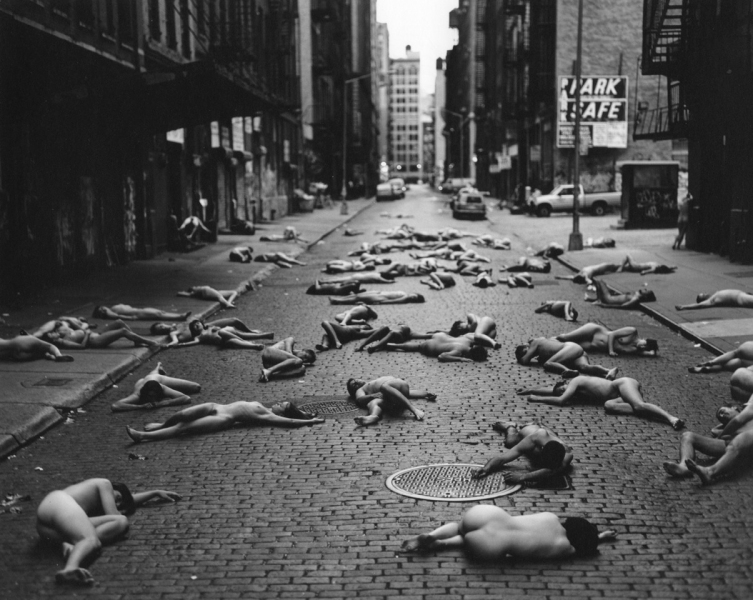
Spencer Tunick, Arrow To Washington, NYC, 1995. Gelatin silver print, 48×60 inches. Edition of 6.
I am spreading the word about Artist Rights, a new project from NCAC's Arts Advocacy Program, the only national program dedicated to working directly with individual artists and curators involved in censorship disputes. The Artist Rights site offers current, comprehensive information to artists who want to learn about their rights under the First Amendment.
I briefly introduced Artist Rights in an article for the June issue of Art21 Magazine. More recently, Creative Capital's Jenny Gill interviewed me about the project for their blog. Creative Capital supports artists nationwide through funding, counseling and career development services. The interview starts here:
Jenny Gill: How did the Artist Rights site come to be? Who compiled the resources and research available there?
Joy Garnett: Artist Rights was created to address questions that artists may have about their rights under the First Amendment. The site is a collaboration between the National Coalition Against Censorship (NCAC) and the Center for Democracy and Technology (CDT). Previously, NCAC put together an art law database with help from a lawyer and five law students, and the CDT had built a site to address artists’ online rights. The Artist Rights site brings together the content of these two resources into one cohesive, easily navigable site.
The impetus for creating Artist Rights was an incident involving an artist who received a letter demanding that their work, which included nudes, be removed from an exhibition in a public space. The letter contained legalese that the artist found confusing and intimidating; had he been able to penetrate the jargon, he might have realized that the assertions in the letter were incorrect and that he was well within his rights. And so the idea for the website was born.
My conversation with Jenny then weaves between questions about obscenity & nudity, the right to privacy, free expression in public spaces, copyright and fair use. In answer to her question about regulating speech in public places, I talk a little about one of my favorite cases, Tunick v. Safir, which is among the many examples of relevant case law on the Artist Rights site. The case involves the photographer Spencer Tunick and almost one hundred naked people modeling for his photo-shoot in downtown Manhattan. In this case, safeguarding artistic expression under the First Amendment trumped the state law prohibiting public nudity. The court agreed that the city could not interfere with the shoot because Tunick would "incur irreparable injury if he could not proceed" with it.
Visit Creative Capital to read the full interview.
Visit Artist's Rights here.

